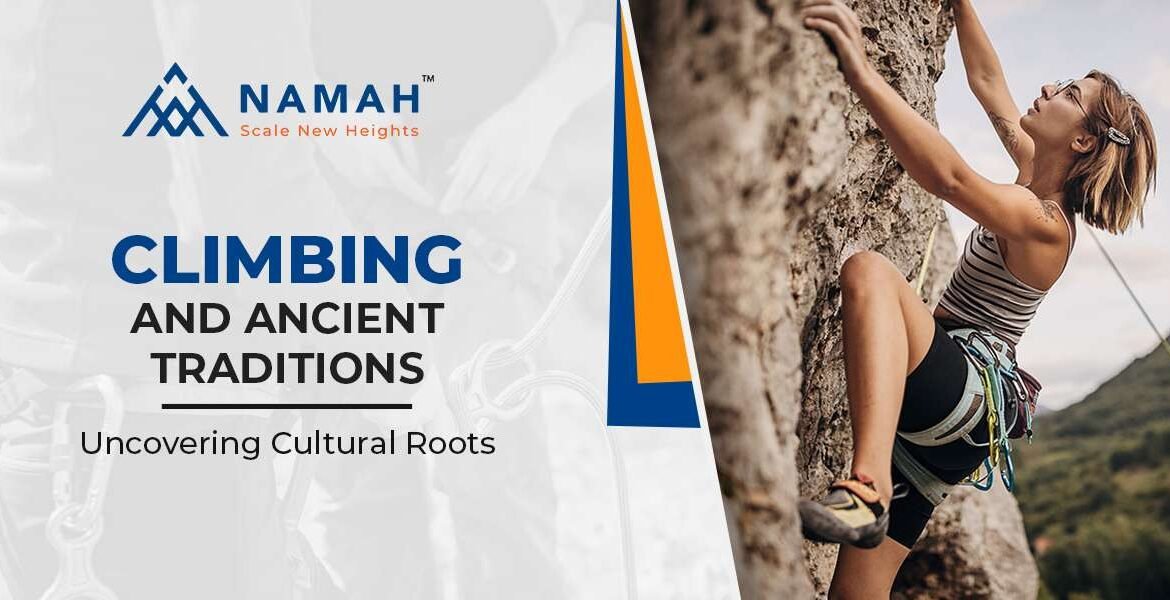Rock climbing, with its origins deeply rooted in adventure and the desire to conquer new heights, is a pursuit that transcends mere physicality. It’s a testament to the indomitable human spirit, an embodiment of pushing boundaries, and a passion that knows no boundaries. But beyond the thrilling modern sport it has become, climbing has a rich and ancient history steeped in culture and tradition across the globe.
The Origins of Climbing: A Historical Perspective
To truly understand the cultural roots of climbing, we must journey back to its origins. Climbing, in various forms, can be traced back thousands of years. Its evolution reflects not only the human quest for adventure but also the unique cultures and terrains where it was practiced.
Early Climbers: The Anasazi of North America
In North America, long before modern climbing techniques and gear, the Anasazi people, ancient Pueblo Indians, were mastering the art of climbing. The intricate cliff dwellings they inhabited in the steep rock faces of the Southwest United States are a testament to their climbing skills. These ancient climbers used minimal gear but relied on expertly crafted hands and footholds carved into the rock.
The Monks of Mount Athos: Spiritual Ascents
Moving across the Atlantic, we arrive at Mount Athos in Greece. This monastic community, which dates back over a thousand years, has a rich climbing history intertwined with religious tradition. Monks in the monasteries nestled on the towering cliffs of Mount Athos have relied on rope and pulley systems to access their sanctuaries high above the sea. This practice of “ascension” is both a practical necessity and a spiritual journey.
Rock Climbing in Ancient China: A Martial Art
In China, the roots of rock climbing are found in martial arts and the practice of “rock jumping.” Dating back centuries, this form of climbing was developed as a defensive tactic for soldiers guarding the Great Wall of China. Climbing became not only a strategic maneuver but also an art form as martial artists practiced their skills on the cliffs and rocky outcrops of the Wall.
Climbing as Cultural Expression: The Art of Petzlari in Greece
In Greece, the Petzlari, a unique group of skilled climbers, played a vital role in cultural expression. Known for their mastery of ascending towering limestone pillars, the Petzlari used their skills not only for practical purposes but also for cultural and social activities. These climbing traditions were an essential part of Greek heritage and a means of fostering community bonds.
The Vertical Nomads: Climbing in Mongolia
Venturing to the vast steppes of Mongolia, we encounter a nomadic culture that has incorporated climbing into their way of life. The Tuvan people, known as the “Vertical Nomads,” are skilled climbers who scale steep rock formations to reach prized bird nests, a valuable resource for food and trade.
Indigenous Climbing in Australia: Embracing the Rocks
Australia, a land of ancient indigenous cultures, deeply connects with the rocks and cliffs that characterize its diverse landscape. Indigenous Australians have been climbing for centuries, not just as a means of navigation but also as a symbol of their cultural identity. Climbing has become an expression of their connection to the land.
The Cultural Tapestry of Climbing
These stories from different corners of the world illustrate how climbing has been an integral part of various cultures and traditions throughout history. It’s more than just a sport; it reflects the human spirit’s resilience and adaptability in diverse terrains and environments.
Climbing in the High Himalayas: Sherpas and Mountaineering
Nepal, home to some of the world’s highest peaks, boasts a rich climbing heritage deeply woven into the culture. The Sherpas, an indigenous community of the Himalayas, have been instrumental in mountaineering expeditions. Their expert climbing skills passed down through generations, have made them indispensable in guiding climbers to the summit of Mount Everest.
The Cultural Significance of Climbing in Maasai Tribes
As we shift our gaze to Africa, we find that climbing holds cultural significance among the Maasai tribes. Traditionally, young Maasai warriors showcased their bravery and strength through climbing. The initiation rite involved scaling an acacia tree using only ropes and without knots. This ancient rite is a rite of passage for Maasai boys on their journey to becoming warriors.
The Towering Structures of Mali: Cliff Dwellings of the Dogon People
In Mali, West Africa, the Dogon people have historically lived in vertical villages carved into the cliffs of the Bandiagara Escarpment. These cliff dwellings, some of which date back to the 14th century, were a strategic choice for defense and shelter. The Dogon people have maintained their unique connection to the cliffs, which involve not only climbing but also intricate architecture and art.
The Staircase of Mount Tai: A Spiritual Climb in China
In China, Mount Tai is a UNESCO World Heritage site known for its unique “staircase to heaven.” This towering mountain is climbed not only for the physical challenge but also as a spiritual journey. Climbing the more than 7,000 stone steps to its peak is a sacred pilgrimage for Buddhists, Taoists, and Confucianists. It symbolizes the ascent to enlightenment.
The Eiger: A Swiss Climbing Icon
Switzerland’s iconic Eiger Mountain holds a special place in climbing history. The Eiger’s treacherous North Face, known as the “Murder Wall,” has witnessed triumphs and tragedies. Climbers from all over the world have been drawn to its sheer rock faces, making it a legendary destination for alpinism.
Climbing Traditions in the Polynesian World
In the far reaches of the Pacific, climbing traditions are integral to the way of life for Polynesian cultures. From scaling the coconut trees of the South Pacific islands to the daring cliff climbs of Easter Island, climbing has served practical purposes such as gathering food and resources.
Ancestral Roots and Modern Climbing
Today’s climbing enthusiasts are standing on the shoulders of those who came before. The stories and traditions of ancient climbers have transcended time and remain deeply rooted in the sport’s culture.
Whether it’s paying homage to the Sherpas of Nepal, drawing inspiration from the Dogon cliff dwellers, or scaling the Eiger’s formidable North Face, climbers continue to embrace the cultural heritage of their predecessors.
Uniting Ancient Traditions with Modern Climbing
The world of climbing is not just a sport; it’s a global tapestry woven with threads of cultural diversity and ancient wisdom. These traditions remind us that climbing is more than a physical act; it explores our connection to the world and to those who climbed before us. In the second part of this article, we’ll delve deeper into the contemporary significance of these traditions and how they continue to shape the climbing world.
Through this journey across continents and time, we can appreciate the depth and diversity of cultural roots intertwined with the passion for climbing. It’s a reminder that while we climb toward new heights, we also climb on the shoulders of history.




